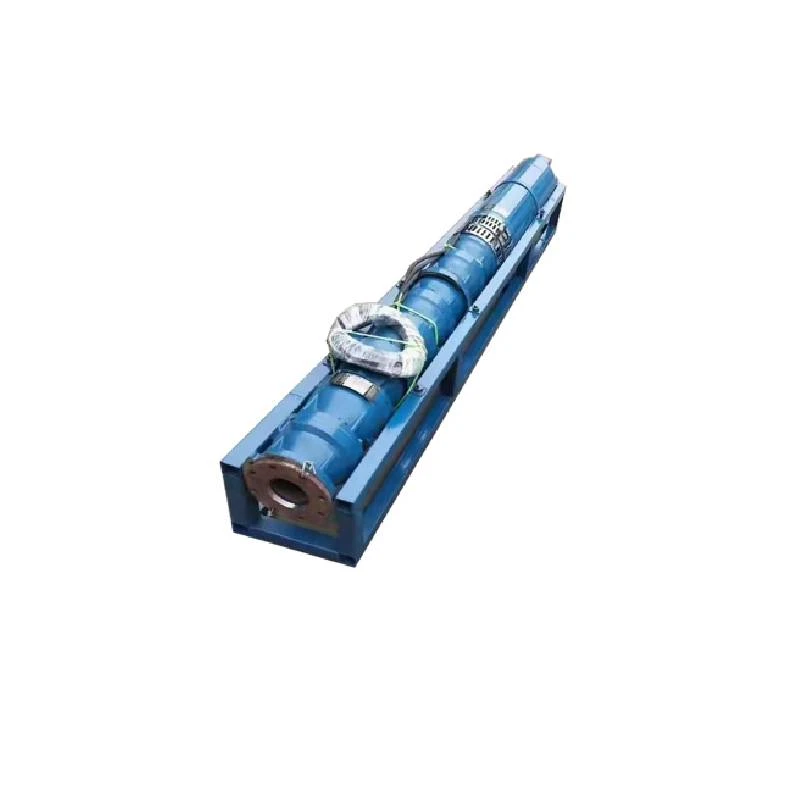Dec . 19, 2024 09:51 Back to list
submersible water pump problems and solutions
Common Problems with Submersible Water Pumps and Their Solutions
Submersible water pumps are vital tools used in various applications, from draining flooded basements to providing water for irrigation systems. However, these pumps can encounter several problems over time, which can affect their performance and efficiency. Understanding the common issues and their solutions can save time, reduce costs, and prolong the lifespan of the equipment.
1. Overheating
One of the most frequent problems faced by submersible pumps is overheating. This typically occurs when the pump operates continuously for an extended period, especially in low water conditions. When a pump runs dry or with insufficient water, the motor generates excessive heat.
Solution To prevent overheating, always ensure the pump is fully submerged in water during operation. Installing a float switch can help control the water levels and automatically shut off the pump when water levels fall below a safe threshold. Additionally, regular maintenance and inspections can help identify any signs of wear or damage that could contribute to overheating.
2. Clogging and Blockages
A common issue with submersible pumps, particularly those used in sewage or dirty water applications, is clogging
. Debris, such as leaves, sand, and other particulate matter, can accumulate in the pump’s intake and impeller, leading to reduced flow rates and potential pump failure.Solution Regular cleaning of the intake screen and periodic maintenance can significantly reduce the risk of clogs. If frequent blockages occur, consider investing in a pump with a larger intake or one specifically designed to handle solids and debris. Additionally, installing a pre-filter system can help trap larger particles before they reach the pump.
3. Electrical Failures
Electrical issues can lead to pump malfunction and are often caused by water ingress or insulation breakdown. Corrosion and wear over time can compromise electrical components, leading to short circuits or reduced efficiency.
submersible water pump problems and solutions

Solution To mitigate electrical failures, ensure that all electrical connections are secure and watertight. Utilize waterproof connectors and junction boxes, and regularly check for signs of corrosion. In environments with high humidity or exposure to moisture, consider using a pump with enhanced waterproofing features.
4. Vibration and Noise
Submersible pumps may produce unusual vibration or noise during operation. This can indicate misalignment, cavitation, or wear on internal components. Such issues can lead not only to decreased efficiency but also to potential damage if not addressed.
Solution If excessive vibration is heard, stop the pump immediately and inspect it for signs of misalignment or wear. Reinstall the pump correctly and ensure all fittings are tight. If the pump is cavitating (which can be identified by a distinct rattling sound), check the suction line for blockages and ensure that the pump is not operating below its minimum flow rates.
5. Reduced Flow Rate
A noticeable drop in water flow can indicate several problems, including clogged filters, damaged impellers, or issues with the motor. Reduced flow rates can significantly affect the performance of applications reliant on consistent water supply.
Solution Assess the pump for internal blockages, and clean or replace filters as necessary. If impellers are damaged, they may need to be repaired or replaced. Ensure the pump is correctly sized for its intended application and review the specifications to confirm it operates within the appropriate range.
Conclusion
Submersible water pumps are essential for various applications, but they can encounter issues that hinder their performance. By recognizing common problems such as overheating, clogging, electrical failures, vibration, and reduced flow rates, users can take proactive steps to maintain their pumps. Regular maintenance, inspections, and following best practices for operation can significantly extend the life of a submersible pump and ensure efficient water management in any setting. Whether in residential, agricultural, or industrial applications, being prepared to address these challenges will lead to more reliable and efficient pumping.
-
Submersible Water Pump: The Efficient 'Power Pioneer' of the Underwater World
NewsJul.01,2025
-
Submersible Pond Pump: The Hidden Guardian of Water Landscape Ecology
NewsJul.01,2025
-
Stainless Well Pump: A Reliable and Durable Pumping Main Force
NewsJul.01,2025
-
Stainless Steel Submersible Pump: An Efficient and Versatile Tool for Underwater Operations
NewsJul.01,2025
-
Deep Well Submersible Pump: An Efficient 'Sucker' of Groundwater Sources
NewsJul.01,2025
-
Deep Water Well Pump: An Efficient 'Sucker' of Groundwater Sources
NewsJul.01,2025
-
 Submersible Water Pump: The Efficient 'Power Pioneer' of the Underwater WorldIn the field of hydraulic equipment, the Submersible Water Pump has become the core equipment for underwater operations and water resource transportation due to its unique design and excellent performance.Detail
Submersible Water Pump: The Efficient 'Power Pioneer' of the Underwater WorldIn the field of hydraulic equipment, the Submersible Water Pump has become the core equipment for underwater operations and water resource transportation due to its unique design and excellent performance.Detail -
 Submersible Pond Pump: The Hidden Guardian of Water Landscape EcologyIn courtyard landscapes, ecological ponds, and even small-scale water conservancy projects, there is a silent yet indispensable equipment - the Submersible Pond Pump.Detail
Submersible Pond Pump: The Hidden Guardian of Water Landscape EcologyIn courtyard landscapes, ecological ponds, and even small-scale water conservancy projects, there is a silent yet indispensable equipment - the Submersible Pond Pump.Detail -
 Stainless Well Pump: A Reliable and Durable Pumping Main ForceIn the field of water resource transportation, Stainless Well Pump has become the core equipment for various pumping scenarios with its excellent performance and reliable quality.Detail
Stainless Well Pump: A Reliable and Durable Pumping Main ForceIn the field of water resource transportation, Stainless Well Pump has become the core equipment for various pumping scenarios with its excellent performance and reliable quality.Detail
